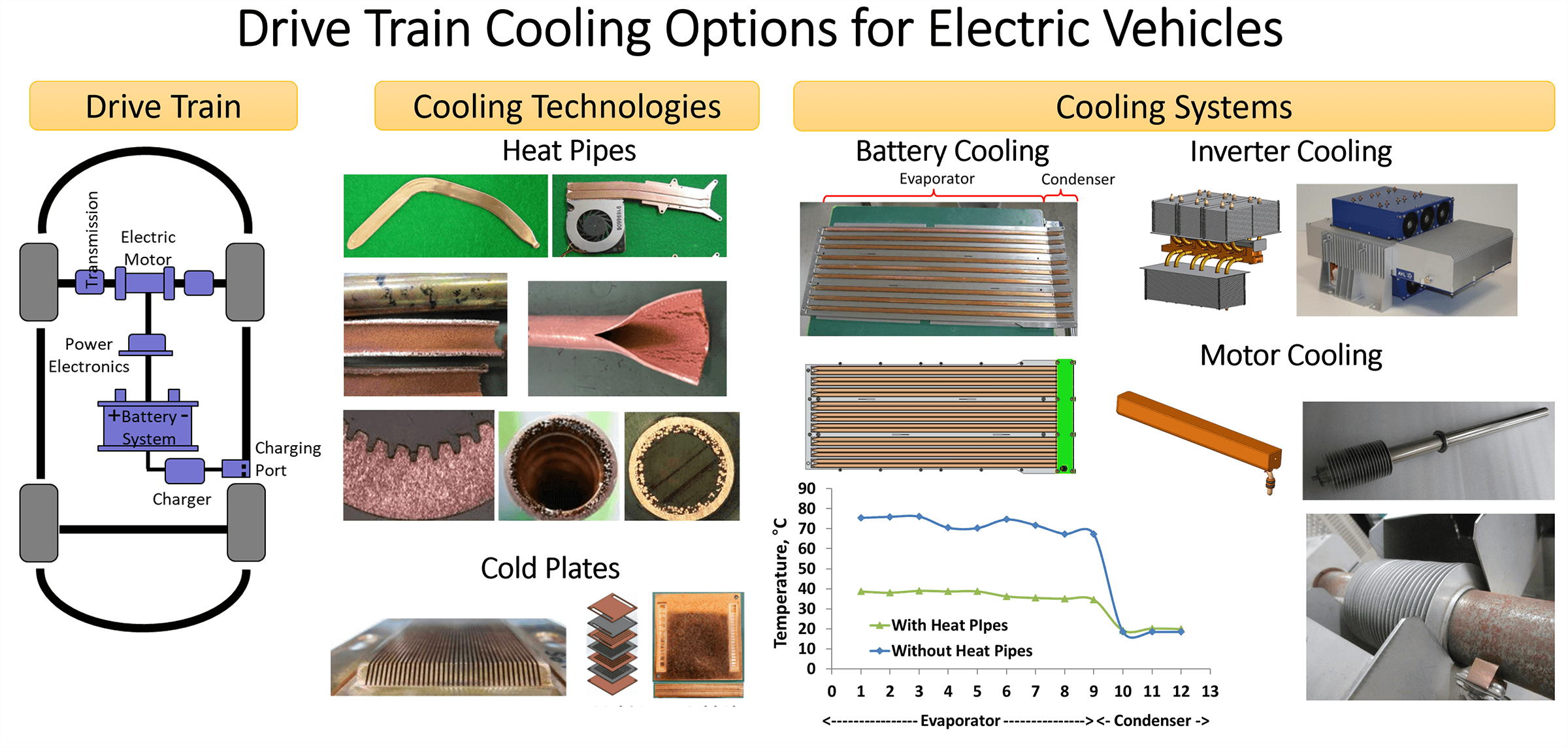 Open Access
Open Access
ARTICLE
Drive Train Cooling Options for Electric Vehicles
1 Fujikura Automotive Europe GmbH, Manchinger Strasse 114, Ingolstadt, D-85053, Germany
2 Fujikura Ltd., 1-5-1 Kiba, Koto-Ku, Tokyo, 135-8512, Japan
* Corresponding Author: Randeep Singh. Email:
Frontiers in Heat and Mass Transfer 2024, 22(3), 703-717. https://doi.org/10.32604/fhmt.2024.050744
Received 16 February 2024; Accepted 15 May 2024; Issue published 11 July 2024
Abstract
Electrification of vehicles intensifies their cooling demands due to the requirements of maintaining electronics/electrical systems below their maximum temperature threshold. In this paper, passive cooling approaches based on heat pipes have been considered for the thermal management of electric vehicle (EV) traction systems including battery, inverter, and motor. For the battery, a heat pipe base plate is used to provide high heat removal (180 W per module) and better thermal uniformity (<5°C) for the battery modules in a pack while downsizing the liquid cold plate system. In the case of Inverter, two phase cooling system based on heat pipes was designed to handle hot spots arising from high heat flux (~100 W/cm)–for liquid cooling and provide location independence and a dedicated cooling approach-for air cooling. For EV motors, heat pipe-based systems are explored for stator and rotor cooling. The paper also provides a glimpse of development on high-performance microchannel-based cold plate technologies based on parallel fins and multi-layer 3D stacked structures. Specifically, this work extends the concept of hybridization of two-phase technology based on heat pipes with single-phase technology, predominately based on liquid cooling, to extend performance, functionalities, and operational regime of cooling solutions for components of EV drive trains. In summary, heat pipes will help to improve and extend the overall reliability, performance, and safety of air and liquid cooling systems in electric vehicles.Graphic Abstract

Keywords
Cite This Article
 Copyright © 2024 The Author(s). Published by Tech Science Press.
Copyright © 2024 The Author(s). Published by Tech Science Press.This work is licensed under a Creative Commons Attribution 4.0 International License , which permits unrestricted use, distribution, and reproduction in any medium, provided the original work is properly cited.


 Submit a Paper
Submit a Paper Propose a Special lssue
Propose a Special lssue View Full Text
View Full Text Download PDF
Download PDF Downloads
Downloads
 Citation Tools
Citation Tools